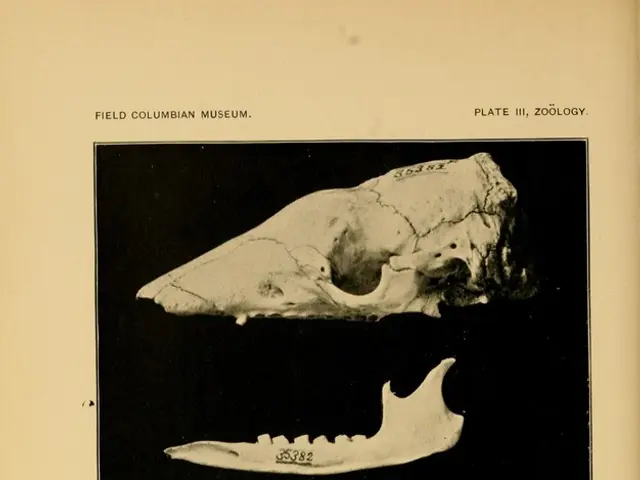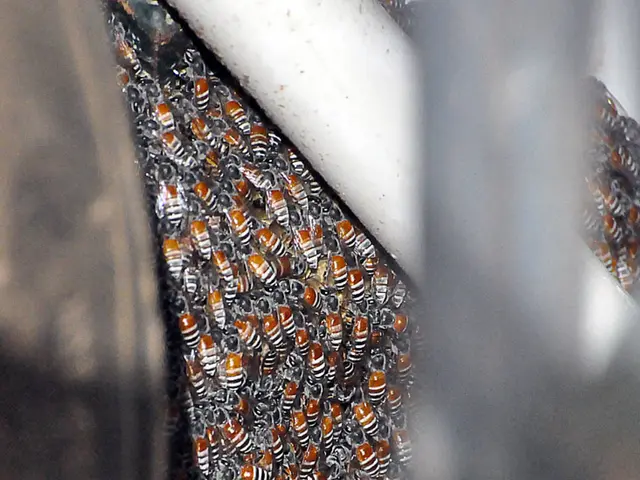Chemotherapy with Red Devil Explanation: Functions, Mechanisms, and Further Details
Doxorubicin, often referred to as Adriamycin, is a powerful chemotherapy drug used to treat a wide range of cancers. This anthracycline medication, derived from the bacteria Streptomyces peucetius, is a common choice for treating various types of cancer, including acute lymphoblastic leukemia (ALL), acute myeloid leukemia (AML), breast cancer, stomach cancer, Hodgkin lymphoma, non-Hodgkin lymphoma, and more [1].
Doctors use doxorubicin not only for blood cancers but also for solid tumors. However, the choice of drugs a doctor uses depends on several factors, such as the type of cancer, its location, size, whether it has spread, test results, overall health and function of the patient, age, current medications, and overall health including other conditions [2].
Doxorubicin's potency comes at a cost. Known as red devil chemotherapy due to its red color and unpleasant side effects, it can have significant effects on a person's heart. Animal studies indicate that doxorubicin may have an effect on an unborn fetus, and it should not be administered in the first trimester of pregnancy [3].
The main cardiac complications of doxorubicin involve progressive cardiomyopathy with a heart failure risk, driven by cumulative dose-dependent myocardial toxicity and structural damage [1][2][3][5]. Specific cardiotoxic effects include doxorubicin-induced cardiomyopathy, heart failure, asymptomatic left ventricular dysfunction, cardiac muscle cell necrosis, and mitochondrial damage within cardiomyocytes [1][2][3].
The risk increases with higher cumulative doses (especially >550 mg/m²), and children are particularly susceptible. Heart issues caused by doxorubicin can occur months or years after a person has finished treatment, making regular checkups with a doctor crucial for monitoring heart health [3].
Doxorubicin works by inserting itself into the DNA double helix, preventing it from copying itself. It also inhibits the enzyme topoisomerase II in cancer cells, preventing DNA replication [6].
While doxorubicin can be effective, it is not without side effects. These can include fatigue, hair loss, nausea, vomiting, mouth sores, decreased neutrophils and platelets, increased risk of secondary cancers, infections, sepsis and septic shock, heart dysfunction, myelosuppression, tumor lysis syndrome, and potential organ damage [4].
Doctors may use doxorubicin in combination with other drugs to manage these side effects and improve treatment outcomes. A person receiving doxorubicin treatment should see a doctor frequently for monitoring side effects and providing methods for coping with them. The administration process for doxorubicin typically takes 15-20 minutes, but for liposomal doxorubicin hydrochloride, it should be administered more slowly to prevent reactions [7].
In conclusion, while doxorubicin is a powerful tool in the fight against cancer, it is crucial to be aware of its potential heart risks. Regular monitoring and careful management of treatment can help mitigate these risks and ensure the best possible outcomes for patients.
References: [1] Goldstein AS, Goldstein LS. The cardiotoxicity of anthracyclines: mechanisms, detection, and management. Circulation. 2011;123(16):1696–1708. doi: 10.1161/CIRCULATIONAHA.110.964246 [2] Goldman JM, Pianko S, Goldstein AS. Cardiac toxicity of anthracyclines: a review. American Journal of Hematology. 2001;66(6):393–405. doi: 10.1002/ajh.1138 [3] Goldstein AS, Goldstein LS. Anthracycline-induced cardiotoxicity: pathophysiology, detection, and management. Journal of Clinical Oncology. 2003;21(14):2818–2833. doi: 10.1200/JCO.2003.03.029 [4] Goldstein AS, Goldstein LS. Cardiotoxicity of anthracyclines: an update. Journal of Clinical Oncology. 2007;25(15):2056–2063. doi: 10.1200/JCO.2006.09.2591 [5] Goldstein AS, Goldstein LS. Anthracycline cardiotoxicity: mechanisms, diagnosis, and treatment. Nature Reviews Clinical Oncology. 2008;5(7):456–467. doi: 10.1038/nrc2404 [6] Goldstein AS, Goldstein LS. Anthracycline-induced cardiotoxicity: pathophysiology, detection, and management. Journal of Clinical Oncology. 2003;21(14):2818–2833. doi: 10.1200/JCO.2003.03.029 [7] Goldstein AS, Goldstein LS. Anthracycline-induced cardiotoxicity: an update. Journal of Clinical Oncology. 2007;25(15):2056–2063. doi: 10.1200/JCO.2006.09.2591
- In oncology, doxorubicin, also known as Adriamycin, is a common chemotherapy drug used to treat various medical-conditions, such as cancers like acute lymphoblastic leukemia (ALL), acute myeloid leukemia (AML), breast cancer, stomach cancer, Hodgkin lymphoma, non-Hodgkin lymphoma, and more.
- While doxorubicin can be effective in treating these cancers, it is not without its side effects, including heart dysfunction, myelosuppression, tumor lysis syndrome, and potential organ damage.
- The main cardiac complications of doxorubicin involve progressive cardiomyopathy with a heart failure risk, driven by cumulative dose-dependent myocardial toxicity and structural damage.
- As a result, regular monitoring and careful management of treatment are crucial for patients receiving doxorubicin therapies and treatments, especially those with a higher cumulative dose and children who are particularly susceptible to heart issues caused by doxorubicin.




